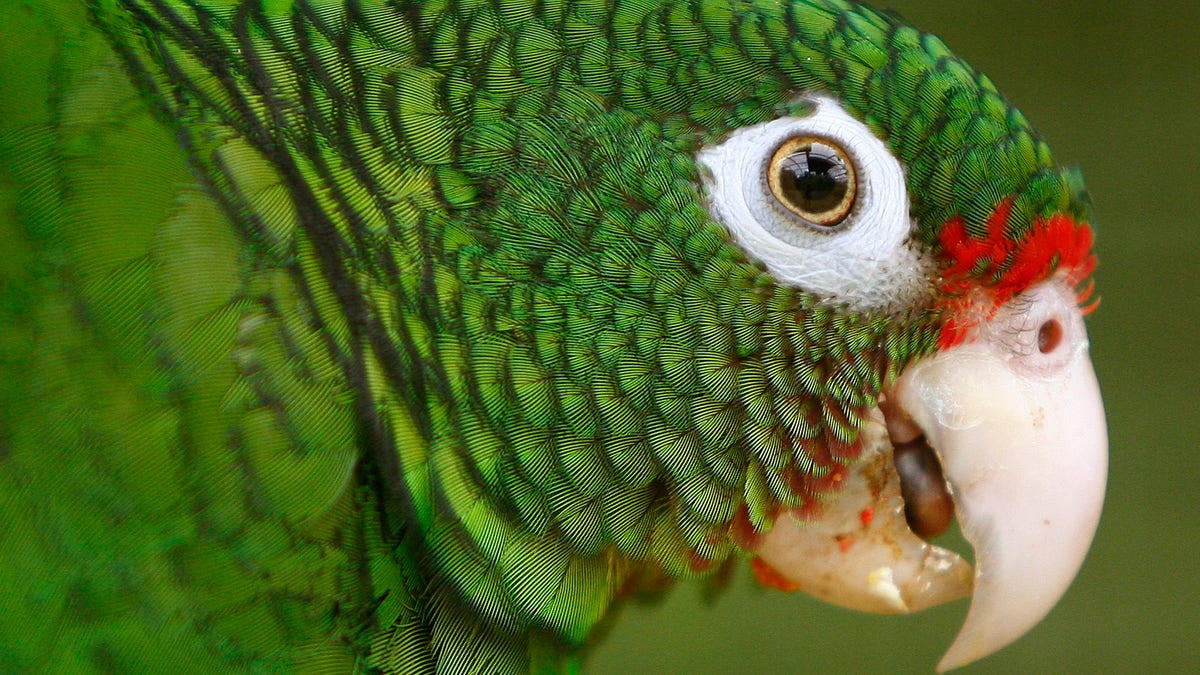
FILE - In this June 23, 2011 file photo, a parrot is pictured inside a fly cage at El Yunque National Forest protected habitat in Luquillo, Puerto Rico. On Thursday, Aug. 13, 2015, scientists transported 25 endangered Puerto Rican parrots to one of the U.S. territory's largest forests in a bid to save the island's only remaining native parrot. (AP Photo/Ricardo Arduengo, File)
SAN JUAN, Puerto Rico (AP) – Scientists transported 25 endangered Puerto Rican parrots to one of the U.S. territory's largest forests this week in a bid to save the island's last native parrot species.
The birds range from juveniles to mature adults and were placed in a large cage where they will learn survival skills for a year before being introduced into the wild at the Maricao state forest.
Natural Resources Secretary Carmen Guerrero said in a phone interview that the forest has the largest plant diversity on the island. "You can imagine how that translates into a buffet for our parrots," she said.
The arrival of the 25 parrots represents a local and federal effort to establish a third population of a bird that saw its numbers dwindle to only 13 in the early 1970s. Two other populations of the birds were earlier established in the Rio Abajo Nature Preserve in western Puerto Rico and in El Yunque, the only tropical rain forest in the U.S. National Forest system.
Those two breeding centers collectively boast nearly 400 parrots now, and another 108 parrots are believed to exist in the wild nearby thanks to an expanding conservation program that has seen 35 parrots released so far this year.
- Five endangered Cuban crocs hatch at Smithsonian’s Zoo
- Borinqueneers: Puerto Rico’s Forgotten Heroes
- Murals, makeshift movie houses mark revival of neighborhood in San Juan, Puerto Rico
- 50 years after Watts riots, the area has undergone massive change
- Misery deepens for those in Puerto Rico who can’t leave
- Best pix of the week
- History made in Havana: American flag raised in Cuba for the first time since 1961
The parrots have red foreheads, turquoise feathers under their wings and grow to nearly a foot in length. They are known for their secrecy and usually mate for life, reproducing once a year.
"At one time, it was among the 10 most endangered bird species in the world," said Tony Tooke, southern regional director for the U.S. Forest Service.
There are currently no known parrots in Maricao, located deep in the mountains of Puerto Rico's southwest region, but scientists hope that will change soon.
Three natural nests have been found so far this year at the nearby Rio Abajo Nature Preserve, said Gustavo Olivieri, who oversees the reintroduction program there.
Last year, two parrots there were born in the wild in a natural nest, the first event of its kind outside El Yunque in 144 years.
"This proves that the parrots know what to do and where to find resources," he said. "It's an extremely promising sign that these parrots can reproduce successfully."

